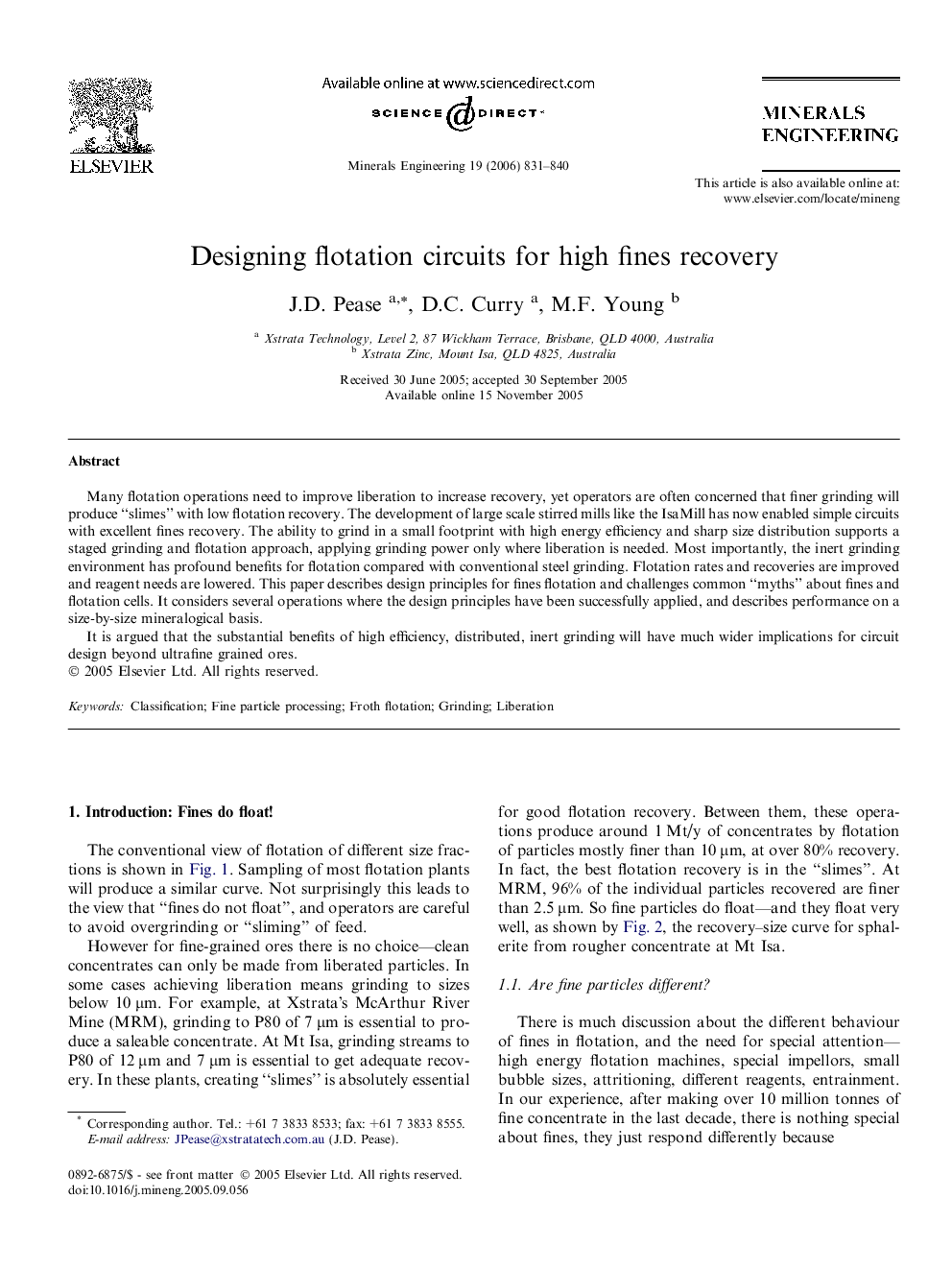| Article ID | Journal | Published Year | Pages | File Type |
|---|---|---|---|---|
| 234588 | Minerals Engineering | 2006 | 10 Pages |
Many flotation operations need to improve liberation to increase recovery, yet operators are often concerned that finer grinding will produce “slimes” with low flotation recovery. The development of large scale stirred mills like the IsaMill has now enabled simple circuits with excellent fines recovery. The ability to grind in a small footprint with high energy efficiency and sharp size distribution supports a staged grinding and flotation approach, applying grinding power only where liberation is needed. Most importantly, the inert grinding environment has profound benefits for flotation compared with conventional steel grinding. Flotation rates and recoveries are improved and reagent needs are lowered. This paper describes design principles for fines flotation and challenges common “myths” about fines and flotation cells. It considers several operations where the design principles have been successfully applied, and describes performance on a size-by-size mineralogical basis.It is argued that the substantial benefits of high efficiency, distributed, inert grinding will have much wider implications for circuit design beyond ultrafine grained ores.
